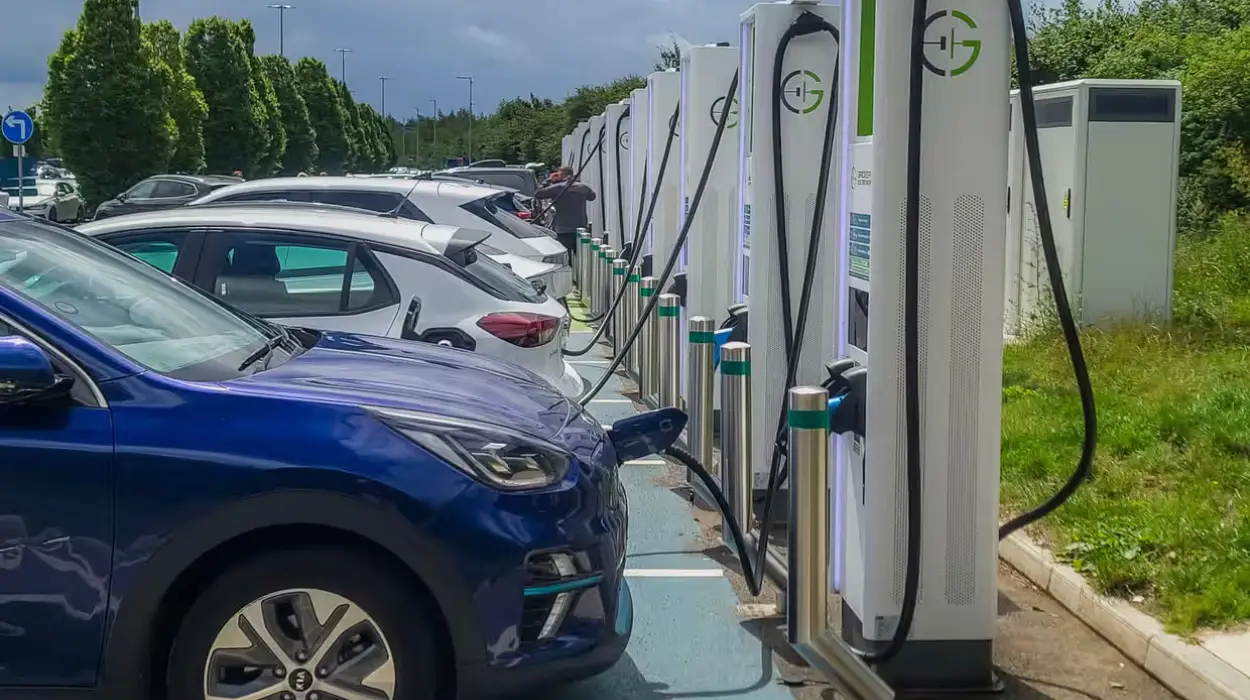UK (Parliament Politics Magazine) – UK’s £950m motorway charging fund, issued in 2020, remains unused, sparking concerns of diversion as industry leaders urge better spending.
As reported by The Guardian, ministers are reviewing the allocation of funds from a £950 million scheme to install rapid electric vehicle chargers on the UK motorways. Announced five years ago, the program has yet to issue a single grant.
When was the £950m EV charging fund announced?
The £950 million EV charging fund was revealed in March 2020, just before the first Covid-19 lockdowns, by then-Chancellor Rishi Sunak. The goal was to fund high-power grid connections for remote motorway service stations. However, years later, questions remain over its implementation.
More than three years after its announcement, the fund remains untouched. Competition regulators raised concerns that the funding could give unfair advantages to select motorway service operators, leading the government to reconsider its approach.
Will the £950m EV charging fund be redirected to other initiatives?
The government is considering reallocating a large share of the rapid charging fund to other EV charging projects or general electrification efforts. A source familiar with government discussions stated that the final allocation is still under review.
Osprey, InstaVolt, and Char.gy argue that the funds would be better utilized in other EV charging solutions in more effective ways.
How will the government handle the delayed £950m EV charging fund?
Industry concerns have risen over delays in the £950m EV charging fund, with fears that the money could be reduced or diverted away from charging infrastructure. As Keir Starmer pushes forward with deep spending reductions on overseas aid and disability benefits, questions remain about the government’s commitment to EV infrastructure
A government source stated there is no intention to scrap the program, however, acknowledging the need for modifications to accommodate changing market conditions.
The source said,
“We want to make best use of government money,” adding, “The concept of supporting charging is not going anywhere.”
How will EV charging fund changes impact service operators?
Motorway service operators, potentially at risk of losing out, will meet with a transport minister after Chancellor Rachel Reeves’s spring statement on Wednesday. However, details of the policy changes are not expected to be revealed in time for their discussion.
Who owns the UK’s biggest motorway service operators?
Britain’s leading motorway service providers are:
- Moto
- Roadchef
- Welcome Break
What does Ian Johnston say about the EV charging fund?
Osprey Charging Network’s chief executive, Ian Johnston, slammed the ‘poor use of taxpayer money’ amid tight public finances. Still, he admitted that some motorway service areas may require aid.
He added.
“Most of the vast rollout of public charging infrastructure, including at motorway service areas, has been funded by private investment. This rollout has surged ahead despite the RCF being significantly delayed.”
What did Delvin Lane, InstaVolt’s CEO, propose for the EV charging fund?
InstaVolt’s chief executive, Delvin Lane, urged the government to allocate the EV charging fund toward slashing public charging VAT from 20% to 5%, offering subsidies for electric car buyers, and reducing high energy costs.
How did the government respond to the EV charging fund?
A Department for Transport spokesperson stated, “We want to use taxpayers’ money as efficiently as possible to make the transition to electric vehicles a success, and we launched the rapid charging fund pilot to better understand where we should target government support. We will apply learnings from the pilot to continue boosting charging infrastructure on the strategic road network.”
What are the different types of EV chargers?
- Slow (Up to 8kW): Ideal for overnight charging at homes, car parks, or hotels.
- Fast (8kW to 49kW): Found at supermarkets and shopping centres; charges smaller batteries in a few hours.
- Rapid (50kW to 150kW): Common near highways; can charge 80% in under an hour.
- Ultra-Rapid (150kW and above): Mostly at motorway services; adds hundreds of miles in about 10 minutes.


